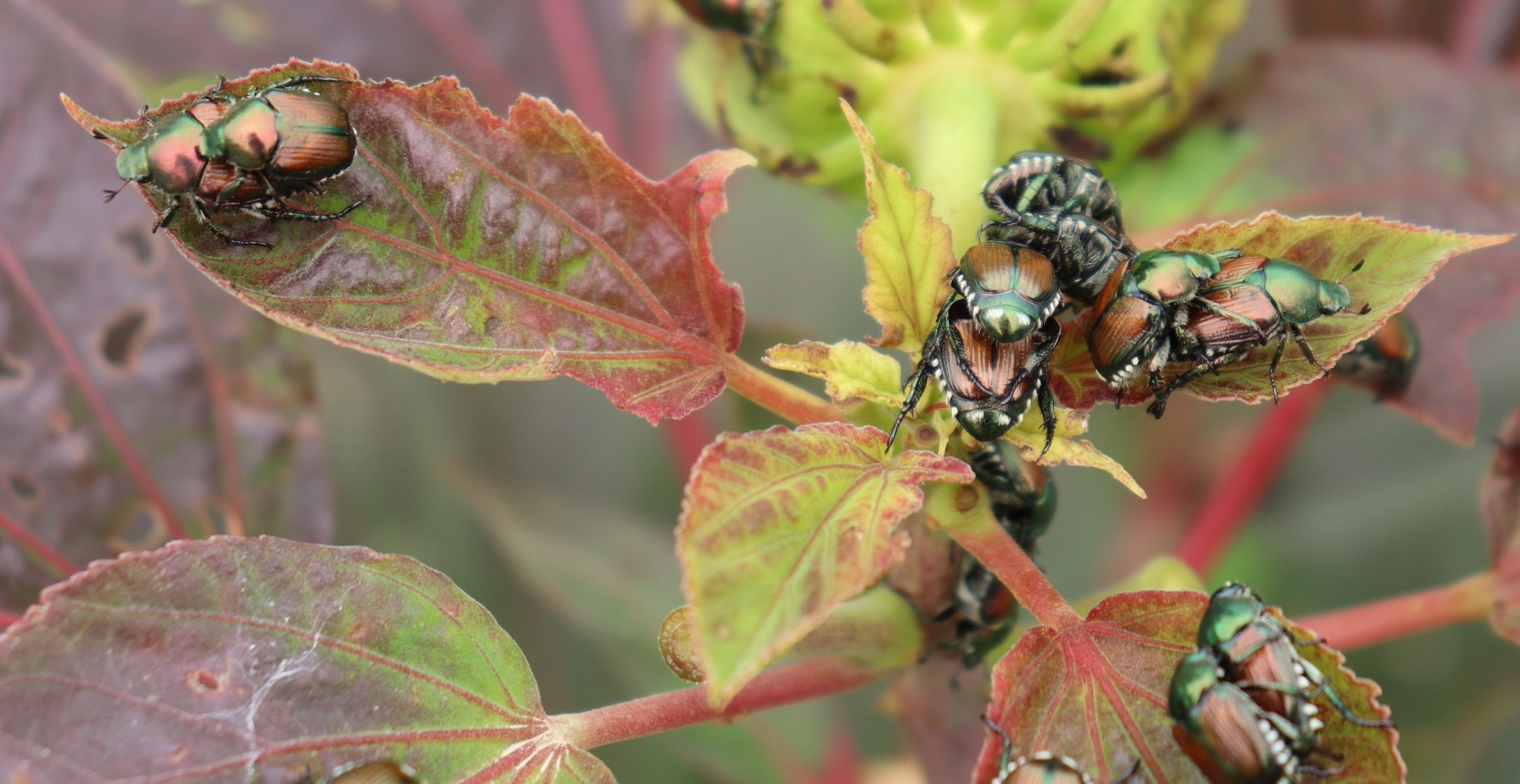Battling Japanese beetles in your garden and flowers

INDEPENDENCE, Mo. — Patience and a bucket of soapy water are your best friends when fending off Japanese beetles in the garden, says University of Missouri Extension horticulturist Tamra Reall.
Reall recommends tapping beetles off plants by hand and putting them in a bucket of soapy water to kill them. You can also shake them off the plant into the bucket.
Doing this daily can reduce numbers and avoid attracting more beetles. “It’s best to do this each morning because the beetles release a pheromone to attract more beetles throughout the day,” she says. You can protect highly valued plants with cheesecloth or fine netting.
Harsher methods like insecticides can harm pollinators and beneficial insects, says Reall. Beetles are a temporary problem for about 4-6 weeks in the summer.
The adult Japanese beetle is a little less than half an inch long and has a shiny, metallic-green body and bronze-colored outer wings. It has six tufts of white hair on each side under the edges of its wings. Japanese beetles produce one generation each year and can burrow up to 10 inches into the soil to survive the winter.
Japanese beetles feed on about 300 species of plants, devouring leaves, flowers and overripe or wounded fruit.
They usually feed in groups, starting at the top of a plant and working downward. They devour foliage, eating the tissue between the veins, giving leaves a lacelike or skeletonized appearance.
They are most active on warm, sunny days and prefer plants that are in direct sunlight. A single beetle does not eat much; it is group feeding that results in severe damage.
Adult Japanese beetles appear to be attracted to odors from beetle-damaged leaves and often return to plants that they fed on in previous years. They also like grassy areas with moist soil.
Japanese beetles are strong flyers and travel as far as three miles, so Reall does not recommend using traps, which will actually attract more beetles to your yard.
Beetles tend to favor certain plant species, so choosing the “right plant for the right place” can help to reduce populations, says Reall. They target the same plants in your garden year after year. Selecting less-preferred plants will reduce Japanese beetles in your yard.
Rosebushes, American linden, crab apples, rose of Sharon and hollyhocks are among the beetles’ favorite choices, says Reall. University of Kentucky’s Department of Entomology lists plants that Japanese beetles are attracted to and those they avoid at https://entomology.ca.uky.edu/ef451.
MU Extension’s Integrated Pest Monitoring website, which gathers information from across the state, offers an alert system for Japanese beetles and other pests. Subscribe to alerts at https://ipm.missouri.edu/pestMonitoring or email ipm@missouri.edu
Miss Clipping Out Stories to Save for Later?
Click the Purchase Story button below to order a print of this story. We will print it for you on matte photo paper to keep forever.

